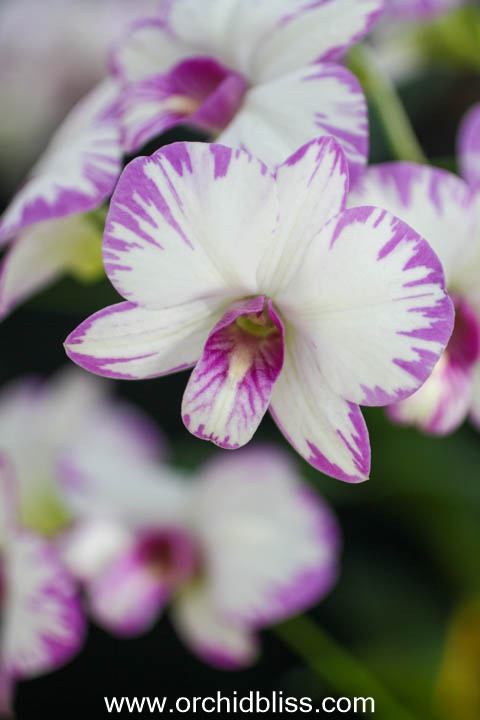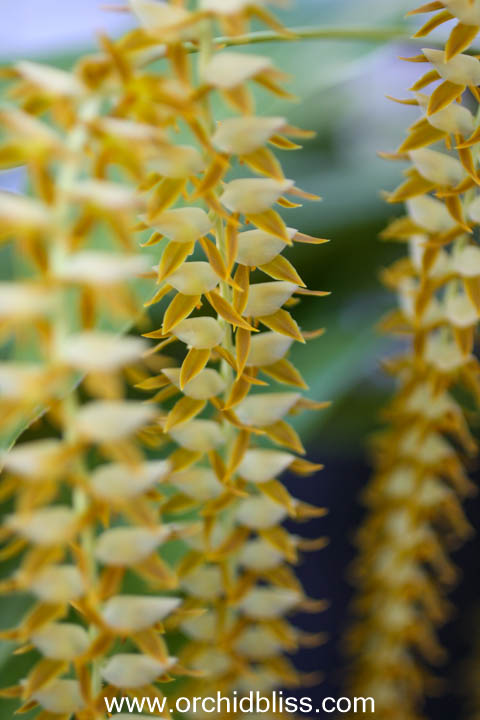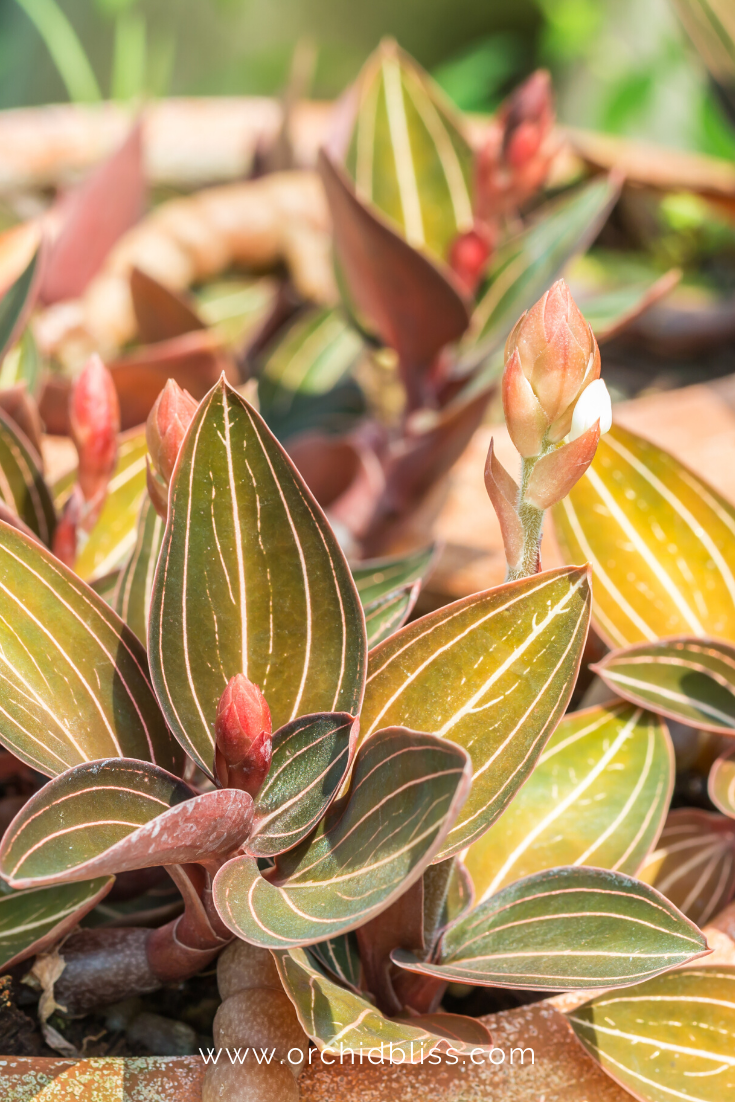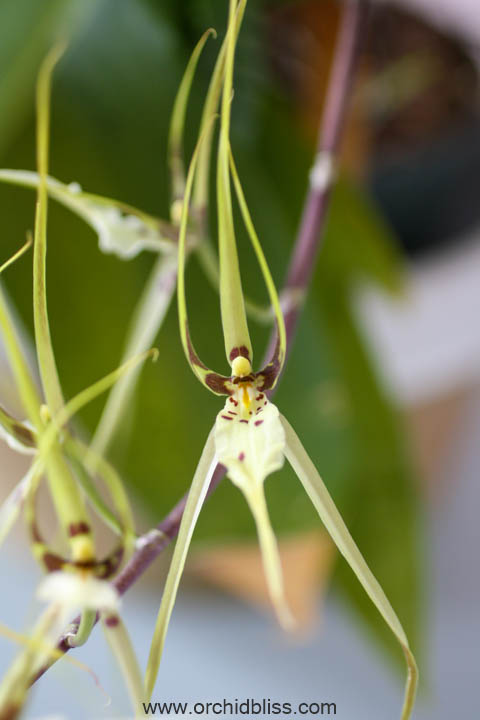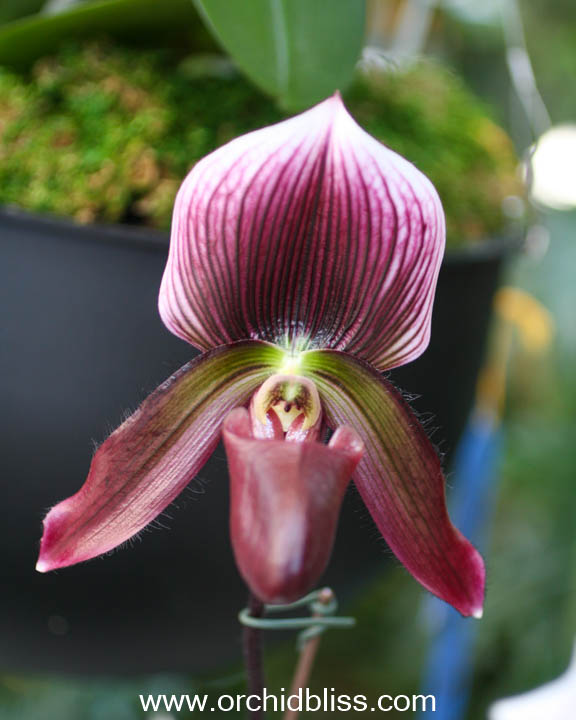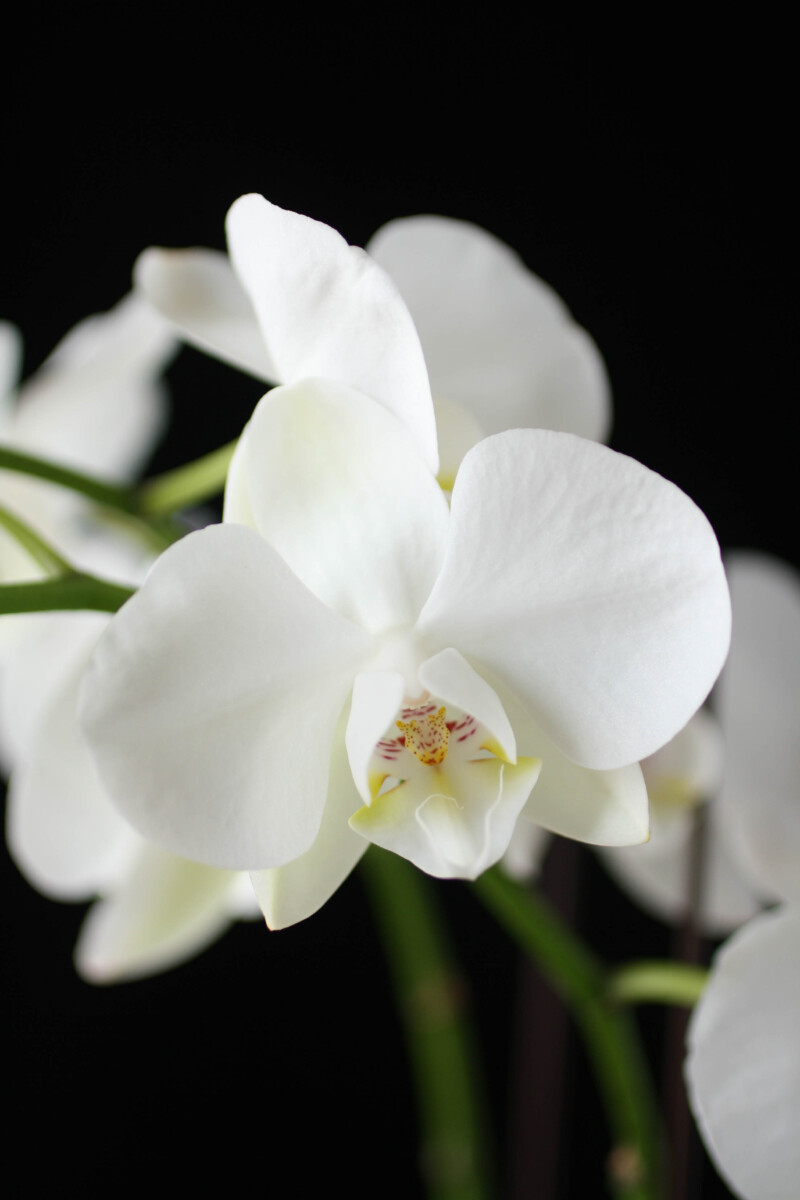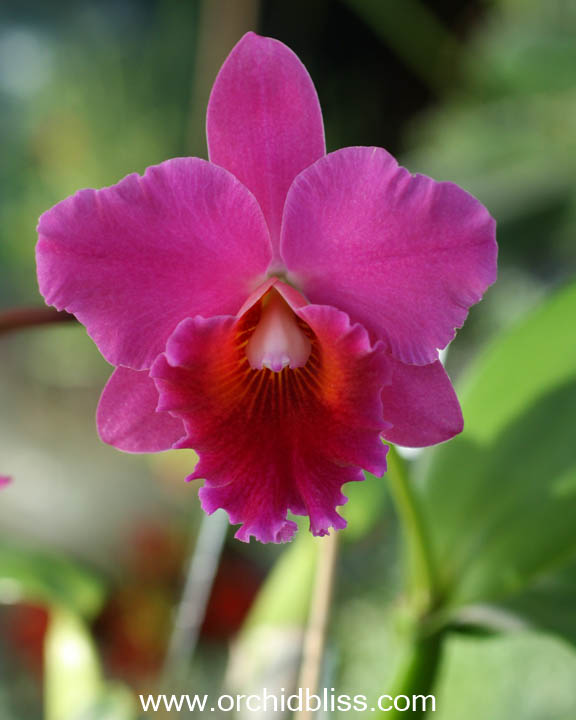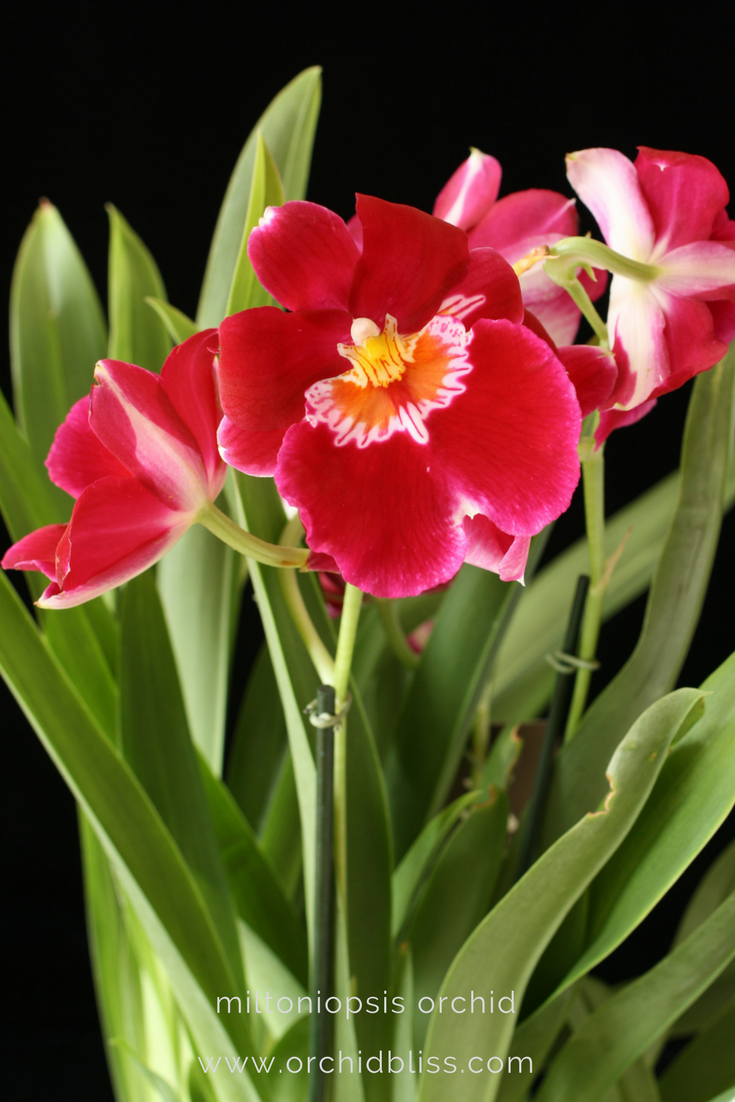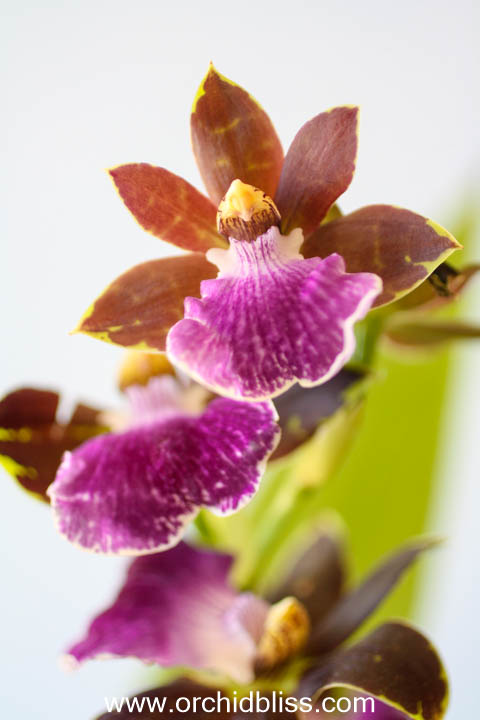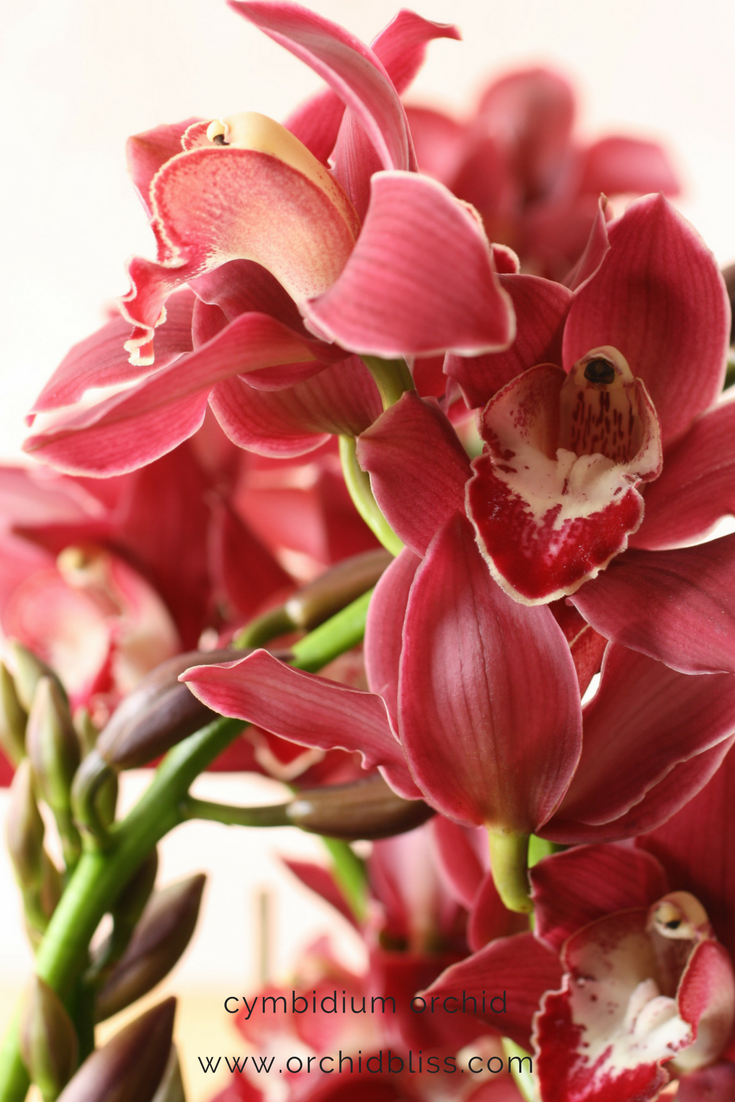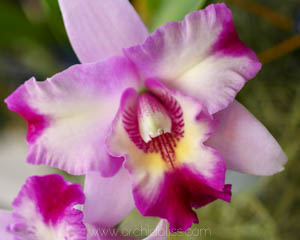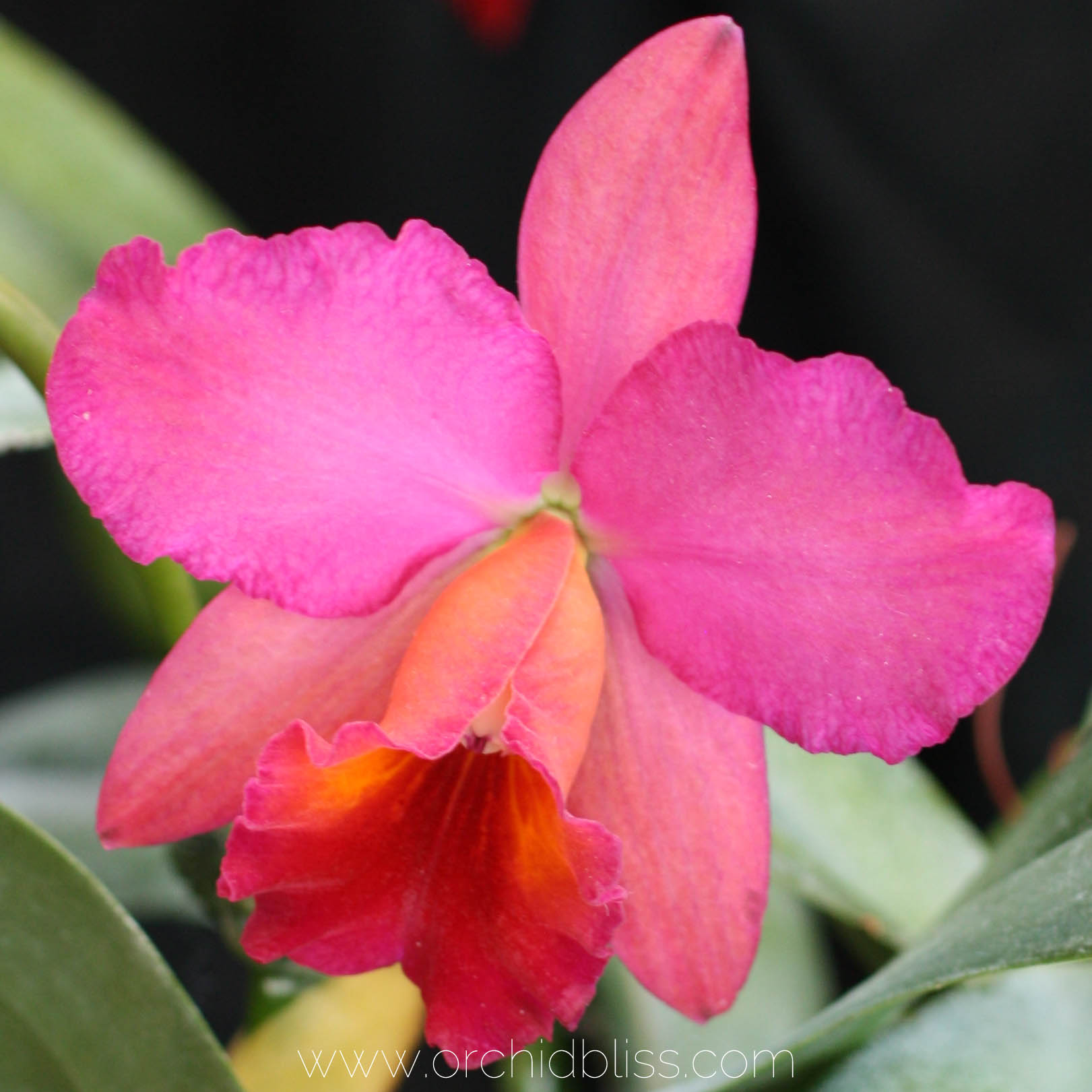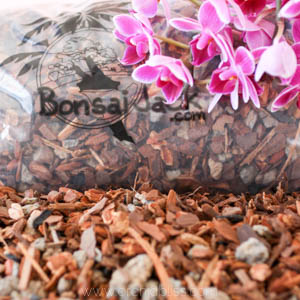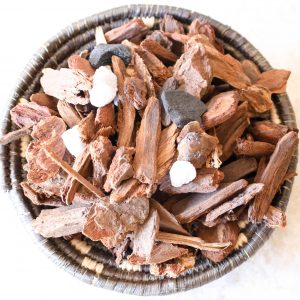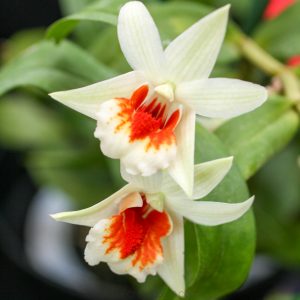
When I first got serious about growing, and re-blooming, orchids, I learned about the important role temperature plays in triggering blooming. I felt nervous about my ability to provide the temperatures my orchids required. I’ve learned a lot, and in this post, I want to share the things I learned about providing orchids with the right temperatures for healthy, flowering orchids.
The 4 Most Important Things You Need to Know About Orchids and Temperature
- Temperature triggers blooming for many orchids.
- Orchids need a 10°-15° temperature drop at night.
- Orchids are classified into 3 different categories (warm, intermediate, and cool).
- Choose orchids based on the temperature ranges you can provide.
The biggest suggestion I have for you is for you to determine what temperature ranges you can reasonably provide and then buy orchids that fit within those parameters. BEFORE buying an orchid, find out what kind of grower the orchid is, then ask yourself, can I reasonably accommodate those temperatures? By following these guidelines, you will save yourself all kinds of money and the orchids you do buy will be much more likely to successfully bloom.
To help you further, start by downloading my free cheat sheet to see where to cut the orchid flower spike after the blooms have faded to trigger re-blooming. Click here for the cheat sheet. It’ll be super helpful.
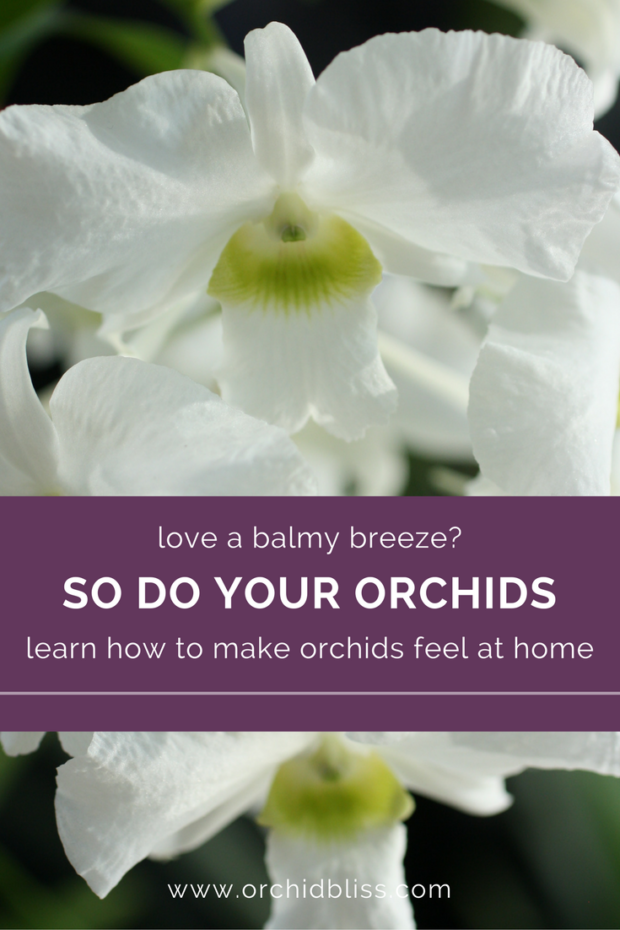
Some of the links on this page may be affiliate links. Click here to learn more.
Orchid Grower Types
Warm Growers Intermediate Growers Cool Growers 65°-85° F/18.3° 24.9° C. 60º-80°F/15.5°-26.6°C 50° - 75° F / 10° - 23.9° C
Winter lows between 65°-70°F/18°-21° C
Summer highs around 85° F/29° C
Winter lows of 58°-62°F/14.4°-16.6°C
Summer highs in low 80s°F/27° C
Winter lows around 50°F/10°C
Summer highs around 80°F/26.6° C
The minimum temperatures denote the lowest the orchids will handle on a winter night. Daytime winter temperatures will be 10°-15° F warmer than nighttime temperatures.
The maximum temperatures are the highest temperatures the orchids will tolerate in the summer. Again, to promote flowering, there should be a 10°-15° F temperature difference between day and night.
When considering the three broad orchid-growing categories, it is helpful to think of where the orchids grow in their native environments.
Cool-growing orchids originate from high-altitude cloud forests.
Intermediate-growing orchids are native to subtropical climates.
Warm-growing orchids are from steamy, sea-level rainforests.
At what temperature should I grow my orchid? That depends on the orchid.
Warm Growing Orchids Warm-Intermediate Growing Orchids Intermediate Growing Orchids Cool Growing Orchids Dendrobium phalaenopsis Dendrochilium Ludisia - Jewel Brassia Paphiopedilum - Slipper Phalaenopsis Cattleya Miltoniopsis Zygopetalum Standard Cymbidiums
NOTE: This table is intended as a general guide. Before purchasing an orchid, always check with the seller to find out what the optimum temperature range is to grow your prospective orchid. Remember, there is a lot of variance within orchid genera.
Daily and Seasonal Temperature Variations
You’ve likely noticed that many orchids fall between ranges. Some are warm to intermediate, or intermediate to cool. There are also temperature ranges within the category. For example, intermediate temperatures fall between 60º – 80°F / 15.5° – 26.6° C. This is because orchids’ temperature needs vary according to the time of day – warmer temperatures during the day, cooler temperatures at night – and the time of year – warmer during the spring and summer and cooler during the fall and winter.
As arbitrary as warm, intermediate, and cool sounds, these are actually specific temperature ranges. When you ask the seller, how do I care for this slipper orchid? And they say, it’s an intermediate orchid. You won’t say, what?!? Instead, because you’ve read this article, you’ll have a good idea that that particular orchid needs a daytime winter temperature of around 70° F/21.1° C, a nighttime winter temperature of around 55° F/12.8° C, and a summer daytime temperature around 80° F/26.6° C, and a nighttime summer temperature around 65° F/18.3° C. You’ll know all this (or at least you’ll know where can look it up) because the seller said, It’s an intermediate grower. Crazy hu?
Do Your Homework
Before purchasing an orchid, always find out what type of grower it is. If you know what type of grower your orchid is, there will be no guesswork–you will know with certainty what temperature your orchids like.
Cool growers can be hard to care for indoors as the cool temperatures are often difficult to achieve indoors. For optimum results, go for warm to intermediate growers.
In reality, it is hard to overestimate the importance of providing an orchid with the right temperatures so it can rebloom. Some orchid experts say that providing the right temperatures is even more important than light to facilitate reblooming.
Can Orchids Tolerate Heat?
Orchids are sensitive to heat stress and sunburn. One summer afternoon after buying a few orchids I stopped off at a friend’s house. It seemed like a pleasant afternoon, not too hot. I unrolled all the windows in my car to keep my orchids from getting too hot. I visited with my friend for a few minutes and came back to find my orchid’s leaves blistered with sunburn. Over the course of a week or two, these blisters turned black. Parts of the leaf tissue were completely destroyed and I had to remove the affected leaves with sterilized pruning shears. It took time, but, thankfully, my orchids did eventually recover.
Protecting Orchids from the Sun
Even a few minutes in direct sun can burn your orchids if it is too hot. If you live in a temperate climate and grow orchids outdoors, or in a greenhouse, you can protect your orchids from the heat with shade cloth, lots of air movement (fans – note the plural), and misters. If you grow orchids indoors you can hang a sheer curtain over the window, turn on a fan, and increase humidity – but don’t add too much humidity, you don’t want to grow mold.
No matter if you grow orchids indoors, outdoors or in a greenhouse, you will notice the position of the sun change in position (more north or more south) according to the season and change in intensity – varying with the weather and time of year.
You may need to make adjustments accordingly. Outdoor growers may place their orchids under covered patios, on the north side of the house, and water more frequently when it’s especially warm. Indoor growers may need to move plants so they are not in the path of direct sunlight.
Water Prevents Suffocation and Dehydration
Keep your orchid sufficiently hydrated. Orchids need water to their roots through traditional watering and water to their leaves via humidity. Orchids cool themselves as they breathe, called transpiration. Pores in the leaves, called stomata, open and the orchid releases oxygen and water. If there is not enough humidity the orchid becomes dehydrated because the air is too dry and the orchid’s stomata close, slowing down transpiration. In effect, the orchid suffocates and dehydrates.
Use a Thermometer
If you are used to growing regular houseplants, using a thermometer may sound a little fanatical. But, if you are serious about growing orchids, it’s just common sense. I have two humidistats, which track humidity and temperature, in the room where I grow orchids. Proper temperature is that important.
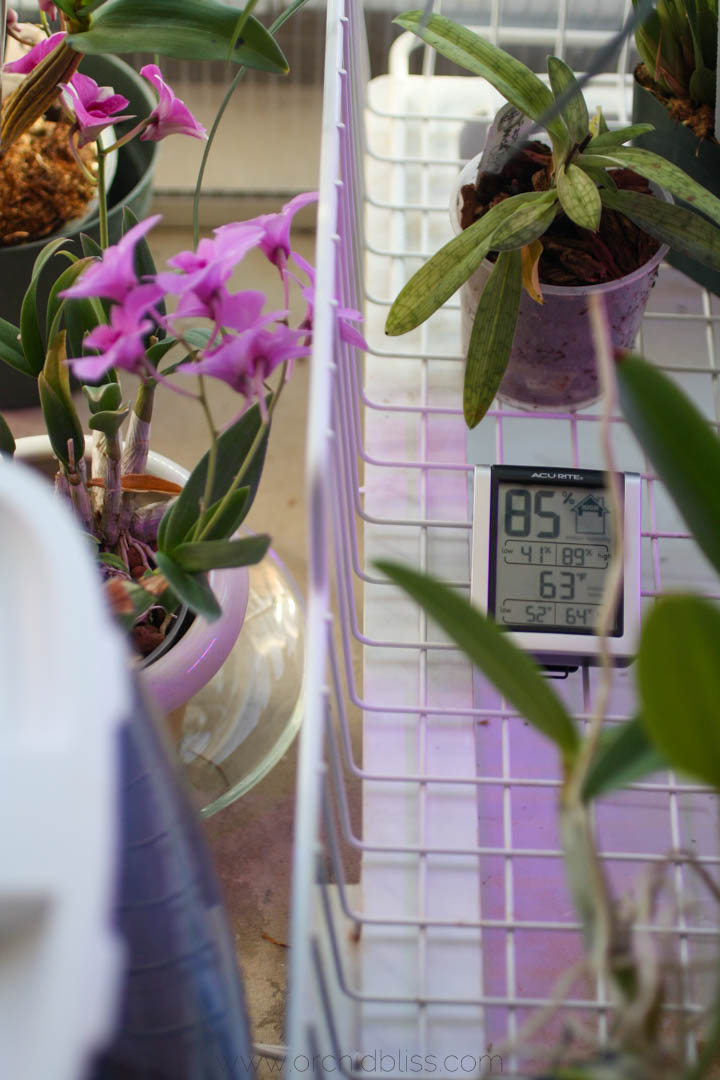
A humidistat is a handy tool that lets you track the temperature and humidity of your orchid growing environment. It is super helpful because you can get a reading of the past 24 -hour highs and lows. This gadget will give you readings in both Fahrenheit and Celcius.
Use Your Fingers
In addition to thermometers, just touching the leaves of your orchids can tell you if they are too hot. If they feel too warm, they are.
Use a Fan
Pointing a fan away from your orchids will keep the air moving. Not only does air movement help prevent bacterial and fungal infections from growing on your orchids, but it also mixes hot and cool air, raising or lowering the temperature to a more optimal range.
Set the fan to low, you don’t want a hurricane, and point the fan away from the orchids. If the fan is pointed directly at the orchids you risk drying out the leaves and roots.
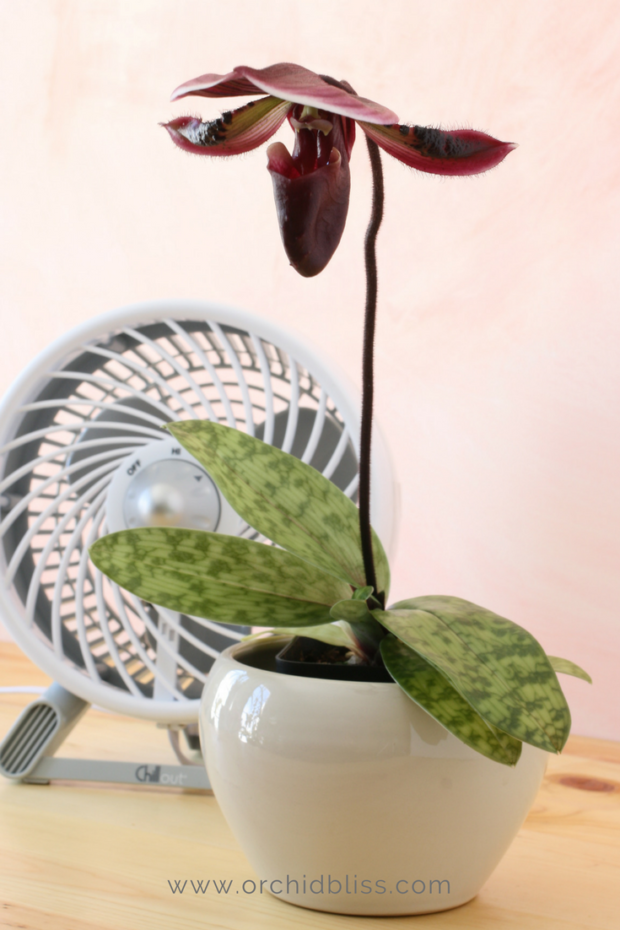
Use a fan to create airflow and prevent infection.
Do orchids die off in the winter?
We think of orchids growing in steamy jungles, and there are many orchids that do. There are also orchids that grow in cold climates. Even where I live, in the Rocky Mountains in the United States, an area widely known for its dry climate there are orchids that grow naturally, in the wild. Still, most cultivated orchids are from more temperate locales.
Growing Orchid Outdoors:
Always know what the ideal temperature ranges are for your orchids and what the temperature ranges are for your climate. For example, even if you live in coastal southern California, you can’t hang a vanda outside on your tree to look at out your kitchen window while you wash the dinner dishes. It will die. This is a privilege reserved for those who live in the even more temperate climate of South Florida. (Do you think people in South Florida with vandas hanging outside their kitchen windows have especially clean kitchens?)
Growing Orchid Indoors:
If you grow your orchids outdoors year-round, you will still need to be aware of the possibility of cool temperatures.
Even indoor orchid growers need to be aware of cold damage. For example, certain warm-growing dendrobiums will drop their leaves if it gets below 65° F/15.5° C. If you visit relatives or travel during the winter and turn down your thermostat while your gone, first consult your orchids and see how cool they like their winters.
Here are a few ideas to protect your orchids from the cold:
- Dry orchids survive cold temperatures better than wet orchids.
- Water in the morning so the orchids have time to dry off before cooler nighttime temperature drops.
- Orchids in active growth with new growth – roots, leaves, pseudobulbs, and buds – are more sensitive to the cold than dormant, or not actively growing orchids.
- If your orchid goes dormant during the winter – wait until spring to fertilize.
- Temporarily enclosing the orchids with plastic sheets, bedsheets, or freeze cloth can create a warmer microclimate.
- Move the orchids to a warmer location. Sometimes easier said than done.
- Incandescent (not LED) Christmas lights and seed mats will slightly raise the temperature.
Controlling Temperature
Greenhouses provide the ideal method of regulating temperatures. Heaters, coolers and waterproof thermostats, shade clothes, ventilators, and partitions between warmer and cooler areas within the greenhouse all contribute to providing orchids with ideal temperatures.
Outdoor and indoor orchid growers are more limited in the scope of orchids they may grow than greenhouse growers, but that does not mean that a substantial variety of orchids are out of reach.
Outdoor growers living in temperate climates must keep a vigilant eye on the weather and take protective measures with shade clothe and misters in the summer and freeze cloth in the winter.
Indoor growers simply need to be aware of seasonal temperatures in their homes. Basements and crawlspaces – particularly when supplemented with artificial lighting can be ideal locations to grow orchids. You may be able to grow many species and hybrids of warm and intermediate-growing orchids. Frost damage is MUCH less likely for orchids grown in-home.
In addition, even if you don’t live in an ideal orchid-growing location, many people find that they can summer their orchids outdoors. If this is the case for you, protecting your orchids from sun/heat damage is a top priority.
Another benefit of growing orchids in a greenhouse is that it’s fairly simple to set the thermostat to achieve a nighttime 10°-15° F degree temperature drop at night. For many outdoor growers, this temperature drop occurs naturally. On the other hand, home growers need to be aware that this can be a little trickier for them and take appropriate measures.
Here are a few tips for in-home orchid growers to achieve a nighttime 10°-15° F temperature drop:
- Weather permitting, crack a window.
- Set your thermostat for lower nighttime temperatures – this may even save you money on your heating bill
- Simplify the variety of orchids you grow. For example, concentrate your efforts on growing a few varieties, with similar temperature requirements, amazingly well. Some orchid growers, even greenhouse growers, take this advice. For example, some enthusiasts just grow cattleyas. Because there is so much variety, they may care for many species and hybrids within a particular genus.
Adapting Orchids to Different Temperature Ranges
Orchids will adapt to varying temperatures within a certain range. Even so, there are limits. If a warm-growing orchid is cared for in a cool-growing environment, the orchid will not bloom as it should and the plant will be weak and slowly decline. The same is true for a cool-growing orchid growing in a warm environment.
All life, including orchids, have enzyme systems and metabolisms that function best within particular temperature ranges. Orchids depend on cues such as temperature, day length, rain, and humidity changes that signal when to flower, when to rest and when to grow. The more closely we replicate our orchids’ natural environment the better our orchids will flourish.
Thank you for spending so must time explaining temperature etc. I'm going to keep trying. Beautiful! Lyn

